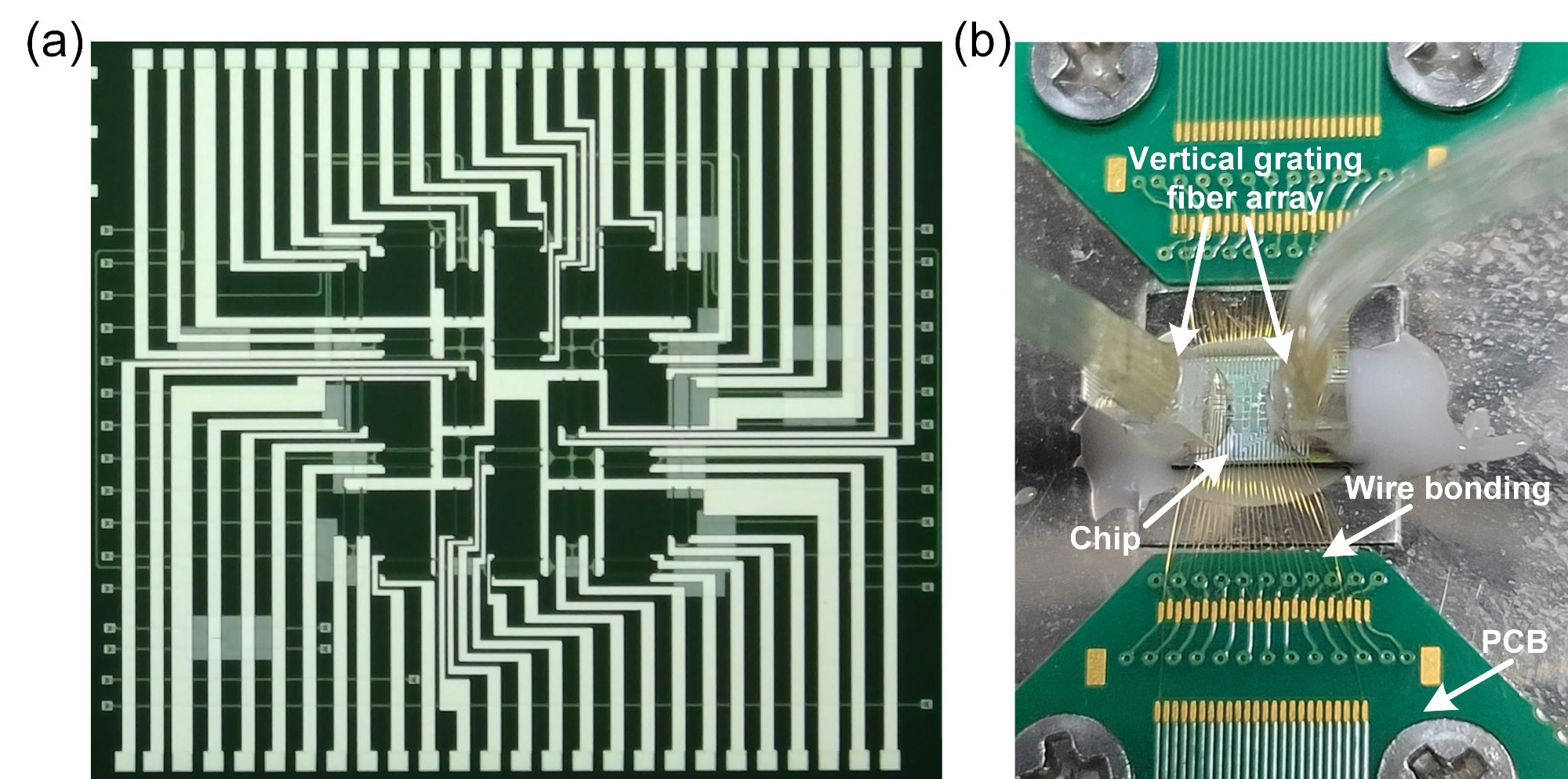An intuitive optical chip that can organize itself to do several tasks has been created by researchers. The device has the potential to be employed in applications that call for optical neural networks, thanks to the positive real-valued matrix computation they have accomplished.
 Researchers have created an optical chip that is based on a quadrilateral Mach–Zehnder interferometer network and is easy to reconfigure for various functions. Pictured are a microscope image of the chip (a) and a photo of the packaged chip (b). Image Credit: Jianji Dong, Huazhong University of Science and Technology
Researchers have created an optical chip that is based on a quadrilateral Mach–Zehnder interferometer network and is easy to reconfigure for various functions. Pictured are a microscope image of the chip (a) and a photo of the packaged chip (b). Image Credit: Jianji Dong, Huazhong University of Science and Technology
Optical neural networks can be used in a number of data-intensive applications, including voice recognition, gesture interpretation, and image categorization.
It has proven possible to create photonic integrated circuits that can be modified after manufacture to carry out various tasks. However, they are sometimes challenging to set up since the user must comprehend the underlying workings and principles of the chip and manually modify each of its fundamental components.
Our new chip can be treated as a black box, meaning users don’t need to understand its internal structure to change its function. They only need to set a training objective, and, with computer control, the chip will self-configure to achieve the desired functionality based on the input and output.
Jianji Dong, Study Team Leader, Huazhong University of Science and Technology
The researchers describe their innovative device, built on a network of Mach-Zehnder interferometers (MZIs) that are waveguide-based optical components, in the journal Optical Materials Express. They demonstrated that the device can self-configure to carry out optical routing, low-loss light energy splitting, and neural network-building matrix calculations.
Dong stated, “In the future, we anticipate the realization of larger-scale on-chip programmable waveguide networks. With additional development, it may become possible to achieve optical functions comparable to those of field-programmable gate arrays (FPGAs)—electrical integrated circuits that can be reprogrammed to perform any desired application after they are manufactured.”
Creating the Programmable MZI Network
For applications requiring optical neural networks, which are built from networks of nodes that are interconnected, the on-chip quadrilateral MZI network could prove helpful. An optical neural network must be trained with known data to establish the weights between each pair of nodes, which requires matrix multiplication to be used successfully.
“On-chip matrix operations have been typically implemented using forward-propagating MZI networks or microring arrays. Inspired by FPGAs in electronics, we wanted to use an MZI topological network structure that allowed both feedforward and feedbackward propagation for matrix operations,” Dong further stated.
They designed a device that can be changed by modifying the voltages of electrodes, resulting in different light propagation routes in the quadrilateral network. The researchers used a gradient descent approach to speed up the convergence rate of the cost function, which measures the network’s accuracy with each training iteration.
After each training cycle, the chip updates the voltages of all the adjustable electrodes rather than the value of a single variable, which enhances the cost function’s convergence rate even further. These enhancements help to accelerate the training process.
Achieving Various Functions
The researchers demonstrated that the device could be used to do what is known as positive real matrix computation for the first time in a quadrilateral MZI network. The difference between the chip’s training and target matrices was modest.
They also achieved optical routing with a high extinction ratio, a subset of positive real matrix computation. Optical routing can efficiently transfer optical communications between data center equipment such as CPUs and memory units. When processing a high number of signals, optical techniques assist in minimizing latency and power usage compared to electrical alternatives.
The researchers are currently striving to develop the chip so that it can perform even more matrix operations. Beyond optical neural networks, they would want to investigate using it for additional matrix computing applications.
Journal Reference:
Zhao, M., et al. (2023) On-chip multifunctional self-configurable quadrilateral MZI network. Optical Materials Express. doi:10.1364/OME.499408